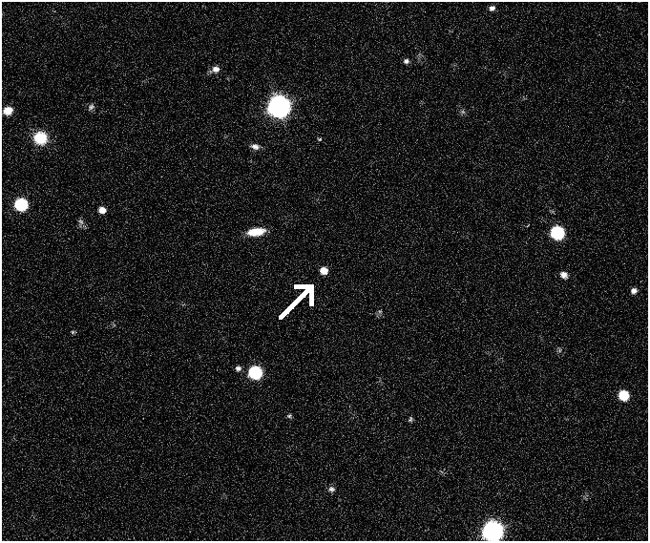'Hello, I Must Be Going': Speeding Star Set to Escape Our Galaxy

Having lost its companion in a close brush our Milky Way's supermassive black hole, a fast-moving star appears to have had enough. It's fleeing the galaxy.
Moving at more than 1.5 million mph (670 kilometers per second), the speedy star's path has been traced back to the galactic center. Here's what astronomers think happened:
The star was once part of a two-star system. Like all stars in the Milky Way, the pair orbited the center of the galaxy. But they got precariously close to the central black hole, which has a mass of more than 3 million Suns. The gravitational interaction shot the star outward like a rock from a slingshot. The companion was stripped away and lured into a tight orbit around the center of the galaxy.
"We have never before seen a star moving fast enough to completely escape the confines of our galaxy," said Warren Brown of the Harvard-Smithsonian Center for Astrophysics. "Only the powerful gravity of a very massive black hole could propel a star with enough force to exit our galaxy."
The former companion provided a kick, too, Brown told SPACE.com. The orbital energy of the tight-circling pair was transferred to the fleeing star.
Several clues were pieced together to suggest the scenario.
Brown and colleagues used the MMT Observatory in Tucson to measure the star's speed and path. It is moving almost directly away from the center of the galaxy. The star took about 80 million years go from the galactic center to its present location, and it is at least that old, the observations show. Finally, the star is laden with heavy elements, which are prevalent toward the center of the galaxy.
Get the Space.com Newsletter
Breaking space news, the latest updates on rocket launches, skywatching events and more!
"Because this is a metal-rich star, we believe that it recently came from a star-forming region like that in the galactic center," Brown said.
The star is catalogued as SDSS J090745.0+24507. It is currently in the galactic outskirts, about 195,000 light-years from the center, and it's a similar distance from Earth. The path suggests it did not come from any other nearby galaxy nor is it headed toward one, Brown said in a telephone interview.
It is travelling at twice the speed needed to escape the gravitational clutches of the galaxy. About 80 million or 100 million years from now, Brown said, the star will exit the galaxy and become a lone wanderer of intergalactic space.
The observations will be detailed in the Astrophysical Journal.
- Blazing Speed: The Fastest Stuff in the Universe
- Star Observed Circling Milky Way's Black Hole
Join our Space Forums to keep talking space on the latest missions, night sky and more! And if you have a news tip, correction or comment, let us know at: community@space.com.

Rob has been producing internet content since the mid-1990s. He was a writer, editor and Director of Site Operations at Space.com starting in 1999. He served as Managing Editor of LiveScience since its launch in 2004. He then oversaw news operations for the Space.com's then-parent company TechMediaNetwork's growing suite of technology, science and business news sites. Prior to joining the company, Rob was an editor at The Star-Ledger in New Jersey. He has a journalism degree from Humboldt State University in California, is an author and also writes for Medium.









